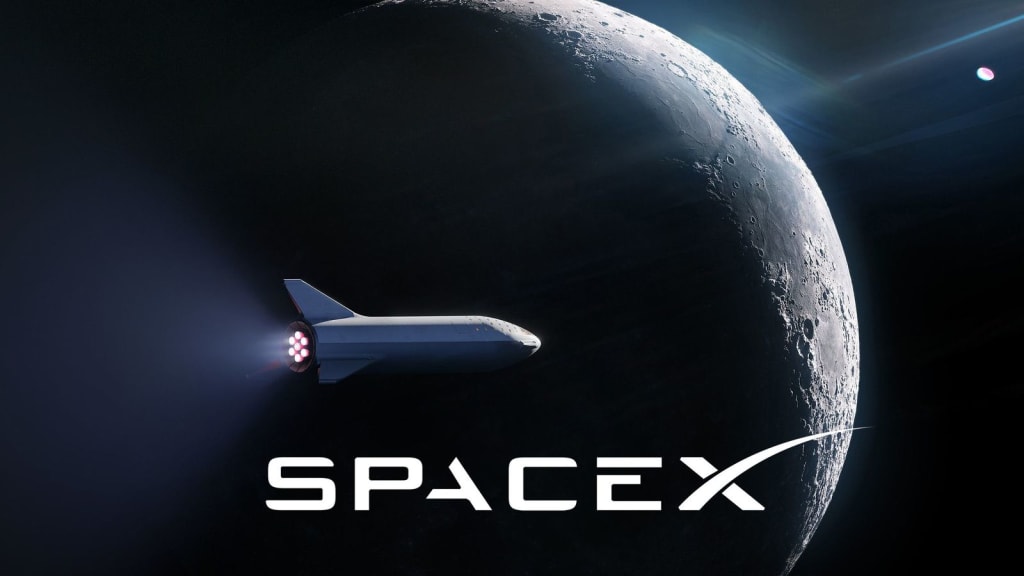Exploring the Frontiers: SpaceX's Odyssey into the Cosmos
A New Era of Cosmic Entrepreneurship

How does the Starlink system function? Our current era is characterized by the ubiquity of the internet, a transformative force that has revolutionized the way we live and engage with each other. It has ushered in education, entertainment, convenience, and even democratic participation. It's a challenge to envision a world devoid of internet connectivity. The video content we create and share with our valued subscribers hinges entirely on the internet. Surprisingly, nearly 50% of the global population still lacks internet access, which is a startling reality. To address this disparity and extend internet access to every corner of the planet, Elon Musk's SpaceX has undertaken the initiative of launching Starlink Satellites, aimed at delivering worldwide internet coverage. But how exactly does internet provision from space function? How can Starlink satellites furnish internet service from their orbital positions? Could this initiative revolutionize our world? Let's delve into these inquiries and more.
Starlink represents a comprehensive endeavor by SpaceX to construct a global broadband network utilizing an array of Low Earth Orbit (LEO) satellites that deliver high-speed internet services. This system is particularly well-suited to providing internet coverage in remote and geographically isolated regions where traditional internet infrastructure is absent. Starlink relies on satellite internet technology that has been in existence for several decades. Instead of employing conventional cable methods such as fiber optics for transmitting internet data, this satellite-based system transmits radio signals across the expanse of space. These signals originate from ground stations and are relayed to satellites in space, which subsequently disseminate the information to Starlink users on Earth. The core objective of the Starlink project is to establish a globally accessible, low-latency internet network. Nevertheless, it's important to note that Starlink is not the sole contender in the race to provide satellite-based internet services. Other entities like OneWeb, Amazon Kuiper, and Viasat are also vying for a slice of this burgeoning market. Nonetheless, SpaceX maintains a competitive edge due to several key factors.
Starlink differentiates itself by employing a multitude of diminutive satellites instead of a handful of larger ones. These satellites orbit Earth at a mere 300 miles above sea level, a considerably lower altitude than traditional geostationary orbits. This configuration enhances internet speeds while minimizing latency. The latest iteration of Starlink satellites integrates laser communication components, facilitating direct signal transmission between satellites and reducing reliance on an excessive number of ground stations. In the near future, SpaceX intends to launch up to 40,000 satellites, thereby ensuring comprehensive and uninterrupted global satellite coverage. An advantage that Starlink enjoys is its affiliation with SpaceX, a company that not only launches Starlink satellites but also conducts regular partner launches. This synergy is pivotal in addressing the substantial costs associated with satellite launches, which might hinder the efforts of other satellite internet providers. Despite SpaceX's significant accomplishments in projects like Starship and Crew Dragon, the Starlink initiative stands out as their most frequently launched endeavor. Elon Musk recently revealed plans to execute a weekly Falcon 9 launch, with many of these missions likely dedicated to Starlink launches, if not other major undertakings. Even upcoming Starship launch vehicles are poised to transport larger batches of Starlink satellites, including future iterations like Starlink 2.0.
Now, let's explore the mechanics of satellite mega constellations such as Starlink and the rationale behind their numerous satellites. Starlink satellites are classified as smallsats or cubesats, with masses ranging from 100 to 500 kg. They are placed in Low Earth Orbit at an altitude of approximately 600 kilometers. SpaceX initiated their Starlink venture by launching the first batch of 60 satellites in May 2019, each with a weight of around 230 kg. While the initial blueprint aimed for a constellation of 4,000 interconnected satellites, this number has since substantially expanded. The technological framework behind Starlink is equally remarkable. The satellites employ optical inter-satellite communication, digital processing technology in the Ku and Ka bands, and phased array beamforming. While specifics about the phased array technology were disclosed in frequency applications, SpaceX has kept the optical inter-satellite links under wraps. It's noteworthy that earlier Starlink satellites lacked laser connections, but successful tests were conducted for inter-satellite laser links in late 2020.
Elon Musk expressed his intent to streamline the production of Starlink satellites at a significantly reduced cost per unit, drawing parallels with SpaceX's achievements in revolutionizing rocket technology. Musk emphasized the need to transform both satellite and rocket domains to bring about transformative changes in space. The adoption of smaller satellites is pivotal in cost-effectively expanding space-based internet and communication capabilities, as Elon Musk highlighted. Recognizing their nascent role in the satellite communications landscape, SpaceX petitioned the FCC in 2015 to explore inventive applications of the Ka-band spectrum prior to committing to 5G communication regulations, which could present barriers to entry. SpaceX's non-geostationary orbit satellite constellation operates in high-frequency bands above 24 GHz, where Earth station transmit antennas possess a broader geographical reach. Furthermore, the lower altitudes of these satellites magnify the impact of interference from terrestrial transmissions.
Typical geostationary satellites entail a theoretical round-trip delay of 477 milliseconds for internet transmission. However, contemporary satellites exhibit latencies of 600 ms or more. In contrast, Starlink satellites orbit at heights ranging from 1105 to 130 times that of geostationary orbits, resulting in more feasible Earth-to-satellite latencies of 25 to 35 ms, comparable to existing cable and fiber networks. The system employs a peer-to-peer protocol simpler than IPv6, coupled with end-to-end encryption. Hall-effect thrusters utilizing krypton gas as reaction mass are employed for orbit raising and station keeping of Starlink satellites. While krypton Hall thrusters exhibit higher flow channel erosion compared to xenon-based systems, krypton's wider availability and lower cost make it a pragmatic choice.
However, it's essential to clarify that the satellite constellation doesn't establish a direct connection with user devices like phones, as is the case with constellations like Thuraya, Iridium, Inmarsat, and Globalstar. Instead, Starlink utilizes flat user terminals, about the size of a pizza box, equipped with phased array antennas. These terminals can be positioned anywhere with a clear view of the sky. These antennas, initially revealed in 2020, were humorously likened to a "UFO on a stick" by Elon Musk. When operational, these self-pointing antennas scan the sky and establish connections with the nearest overhead satellite, provided the ambient temperature is below 122 degrees Fahrenheit. This connection is seamlessly maintained as new satellites come into view while the preceding ones move beyond the horizon. Starlink terminals incorporate motors for self-adjustment, ensuring optimal alignment with the night sky and continuous connectivity.
SpaceX has also established a network of at least 32 ground stations in the United States, with plans for additional stations in the pipeline. Starlink employs the Ka-band to communicate with these ground stations. A standard Starlink ground station comprises nine 2.86-meter antennas within a fenced area measuring 400 square meters. As outlined in their filing, SpaceX intends to deploy ground stations at Google data centers globally. Consequently, the service depends on a network of ground stations referred to as gateways. These stations are strategically located across the globe and interface with Starlink satellites, effectively integrating them into existing fiber-optic infrastructure. To access service, users require a ground station within
500 miles of their location, in addition to their personal antenna.
This system is expected to evolve. Starlink developers have experimented with prototype satellites that employ laser communication. Rather than relying on local ground stations, lasers enable satellites to communicate directly at the speed of light, a swifter medium in space compared to fiber optic cables. Post-launch, a Falcon 9 vehicle deploys 60 Starlink satellites into an initial "parking orbit" at approximately 270 miles (440 kilometers) above Earth. Subsequently, the satellites extend their solar panels and gradually disperse around the planet. Each satellite employs onboard propulsion to ascend to higher altitudes, eventually settling into an orbit around 100 miles (160 km) above the International Space Station's orbit. This ascent causes the satellites to appear dimmer, reflecting less sunlight back to Earth. In contrast, traditional communication satellites for television, for instance, occupy higher orbits to maximize visibility to satellite dishes across wider geographical areas.
In summary, Starlink is poised to tackle the challenge of delivering high-speed internet to rural regions, and with ongoing launches, nearly every part of the world will gain access to internet connectivity. The system's potential extends to supporting internet communication on Mars, as humanity explores prospects for terraforming the planet. The mega constellation project holds promise in terms of global internet accessibility. The question remains: can it effectively deliver internet connectivity worldwide?





Comments
There are no comments for this story
Be the first to respond and start the conversation.